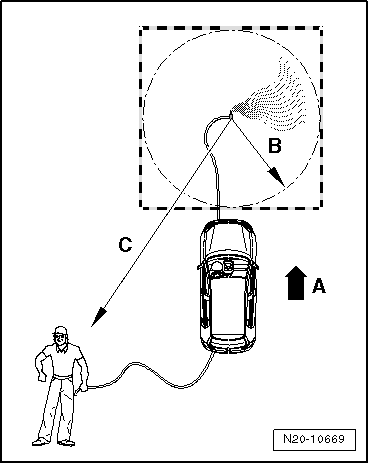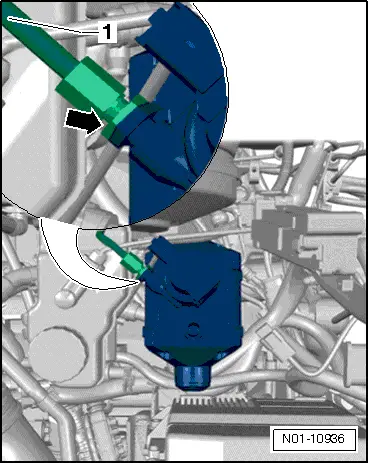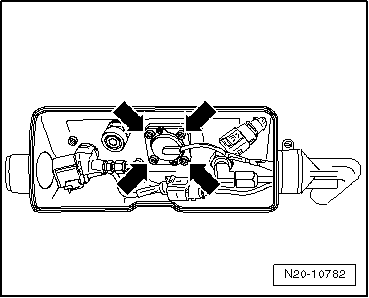| The safety area is to be closed off with barrier tape and the access points are to be marked clearly with a warning that there is a danger of the gas exploding. |

WARNING | Autogas is heavier than air! |
| There must be no cavities in the ground (depressions, pits, channels, cellars or other hollow areas into which the gas can flow). |
| There must be no ignition sources present, e.g. exposed flame, sparks, electrostatic discharge or hot surfaces, that could cause the Autogas to ignite. |
|

Note | t
| It must be ensured that no gas enters buildings further away, e.g. through open windows and doors. In addition, the area must be easily accessible and well ventilated (not a back yard). |
| t
| The wind direction is to be taken into account. |
| Types of fuel tank (Autogas) to be emptied |
| t
| Normal tank emptying equipment or liquid-gas burner developed for LPG |
| t
| Allow to escape into the atmosphere |
| When gas pressure has been reduced, switch off ignition. |

WARNING | There is a danger of injury due to escaping gas. |
| The system is pressurised. |
| Wear suitable protection such as eye protection and protective gloves. |
| Before opening the system place a cloth around the connection. Then release pressure by carefully loosening the connection. |
|
|
|

|
 Note
Note Note
Note
 Note
Note

 WARNING
WARNING Note
Note
